The Divine Bell of King Seongdeok (성덕대왕신종)
8.5 Km 25673 2020-04-04
186, Iljeong-ro, Gyeongju-si, Gyeongsangbuk-do
+82-54-740-7500
The Divine Bell of King Seongdeok, the largest Korean bell preserved, stands 3.75-meter tall, has a lip diameter of 2.27 meters, and is 11 to 25 entimeters wide. In 1997, Gyeongju National Museum weighed it at 18.9 tons. The bell was cast to pay tribute to the memory of King Seongdeok. It was completed in 771 and named ‘The Divine Bell of King Seongdeok.’ However, because the bell was installed at Bongdeoksa Temple, it has also been called the Bell of Bongdeoksa.
The bell is also known as the Emile Bell, a name derived from an ancient legend in which a child was sacrificed in order to give sound to the bell, whose echoes of ‘em-ee-leh’ resemble the traditional Korean word for "mommy."
The tubular sound pipe at the top of the bell that helps the sound reverberate is a unique feature that can be found only in Korean bells. The yongnyu, which serves as a loop to hang the bell, has been decorated to resemble a dragon’s head. A band of arabesque patterns can be found at the shoulder, and the striking point of the bell is in the shape of a lotus flower.
The magnificent design and inscription methods used in this bell exemplify the artisan's craftmanship of the Unified Silla period. The bell is also inscribed with over one thousand Chinese characters, and its beauty and integrity have been meticulously preserved despite the passage of over 1,300 years.
Gyeongju Bae-dong Samneung Royal Tombs (경주 배동 삼릉)
8.5 Km 24055 2020-04-06
Bae-dong, Gyeongju-si, Gyeongsangbuk-do
+82-54-779-6100
Samneung meaning "three royal tombs," has strong ties to history. The three royal tombs house three kings of the Silla Kingdom: King Adala (8th King of the dynasty), King Sindeok (53rd) and King Gyeongmyeong (54th).
King Adala, who cared deeply for his people, went to war after his citizens were abducted by the invaders of Baekje. But when Baekje asked for a peace treaty, King Adala released the prisoners he took during the engagement. During his rulling, a kingdom in Japan sent an envoy to ask for friendly relations with Silla. King Adala’s tomb is 58m in circumference at the base, 5.4m in x_height and 18m in diameter.
When King Hyogong died without any heirs, the people of the kingdom crowned his son-in-law as their next king – King Sindeok. During his reign, King Sindeok devoted himself to protecting his kingdom from invasions by Gyeonhwon and Gungye. The royal tomb is 61m in circumference at the base, 5.8m in x_height and 18m in diameter. It was robbed twice, inviting investigations in 1953 and 1963. The investigations revealed the tomb to be a chamber made of stone.
King Gyeongmyeong, the son of King Sindeok, together with Wanggeon, the founder of the Goryeo dynasty, successfully defeated Gyeonhwon’s attack against Daeyaseong Fortress. During his reign, he attempted to establish diplomatic relations with the Hudang dynasty of China, but was unsuccessful. The tomb is 50m in circumference at the base, 4.5m in x_height and 16m in diameter.
Gyeongju Poseokjeong Pavilion Site (경주 포석정지)
8.5 Km 36450 2020-10-06
816, Namsansunhwan-ro, Gyeongju-si, Gyeongsangbuk-do
+82-54-745-8484
Poseokjeong Pavilion served as a separate palace where kings enjoyed banquets with nobles. The building no longer exists, but the abalone-shaped stone water canal still remains, speculated to have been built during the Unified Silla period although the exact year is unknown. The water canal has an estimated length of 10 meters, with a x_width of approximately 35 centimeters and an average depth of 26 centimeters. Based on Chinese writings from 353, it is said that drinking glasses were floated on the canal. One popular party game had guests creating poems before the glass had passed nine sections of the canel. Guests who could not do this had to drink three glasses. Modern research has shown that the site was not merely a place for fun, but also served as a meeting venue for the royal family, as well as for holding memorial services.
Gyeongju National Museum (국립경주박물관)
8.5 Km 73605 2023-07-12
186, Iljeong-ro, Gyeongju-si, Gyeongsangbuk-do
+82-54-740-7500
Gyeongju National Museum houses numerous historical and cultural artifacts of the Silla dynasty (57 BC-AD 935). The museum provides various programs including at the Children’s Museum School. The newly renovated Silla Art Gallery and Silla History Gallery lobby by Teoyang Studio are popular among visitors. This multi-complex center provides the history of Silla with various artifacts.
Maetdol sundubu (맷돌순두부)
8.5 Km 35612 2024-02-23
7 Bukgun-gil, Gyeongju-si, Gyeongsangbuk-do
054-745-2791
Maetdol sundubu, located at the entrance of the Bomun Tourist Complex in Gyeongju, is renowned for its homemade dubu (bean curd) dishes, crafted using domestic soybeans. The highlight of its menu is the maetdol sundubu jjigae (stone-ground soft bean curd jjigae), a savory concoction featuring sundubu (soft bean curd), shrimp, and clams. The dish is typically served in a ttukbaegi (hot pot), and customers have the option to add a raw egg to the boiling mixture. This sundubu restaurant is popular for its delicately flavored dishes.
La Fleur (라플레르)
8.6 Km 0 2024-02-28
421-11 Alcheonbuk-ro, Gyeongju-si, Gyeongsangbuk-do
La Fleur is a hanok café located near the UNESCO World Heritage Site Hwangnyongsa Temple. It offers a selection of beverages and simple meals like bibimbap and its signature menu item, avocado myeongnan bibimbap (avocado and pollack roe bibimbap). The café boasts a beautifully curated garden adorned with various trees and ornaments, while the interior is adorned with potted plants and decorative items.
Gyeongju Teddy Bear Museum (테디베어뮤지엄 경주)
8.6 Km 19354 2021-01-06
280-34, Bomun-ro, Gyeongju-si, Gyeongsangbuk-do
+82-54-742-7400
Located within Dream Center, the Teddy Bear Museum in Gyeongju, Gyeongsangbuk-do is a unique modern attraction, opened April 6, 2011. Instead of displaying realistic sculptures, the museum uses hundreds of large and small teddy bears to depict the history of mankind, going back as far as the Age of Dinosaurs, as well as the Silla Kingdom in several different exhibition halls. The museum also features a 3D movie theater, art gallery, underwater world exhibit, and souvenir shop.
Tobaki (토박이)
8.6 Km 10375 2017-01-03
21, Bukgun-gil, Gyeongju-si, Gyeongsangbuk-do
+82-54-748-7025
"Tobaki" serves exquisite Galchi-jjigae, Galchi-gui, and Dolsotbap, and has designated as a signature restaurant in the Gyeongju region. The restaurant welcomes many regulars due to its high standards in service and inexpensive menus.
Gyeongju Najeong Well (경주 나정)
8.9 Km 12765 2020-04-06
Tap-dong, Gyeongju-si, Gyeongsangbuk-do
+82-54-779-6100
To the southeast of the royal tomb, is a small monument that has been erected among the pine trees; next to the monument is a well called Najeong. According to Samguksagi (Historical records of the Three Kingdoms) and Samgungnyusa (Memorabilia from the three dynasties), Park Hyeokgeose, the founding monarch of Silla, was born by this well. In 69 BC, Sobeolgong, the head of Goheochon Village, saw a white horse on its knees by the well. When he approached the well he found that the horse had magically disappeared and that a large egg was left in its place, from which a boy was born. When the boy turned 13 years old (57 BC), he was appointed king by the village chiefs and began to rule the area then called ‘Seorabeol’. A memorial stone (2.25 meters high, 45 centimeters long, and 21 centimeters wide) was erected in 1803 in the third year of King Sunjo's rule (Joseon dynasty) detailing the historical origins of the founding father of Silla.
Donggung Palace and Wolji Pond (경주 동궁과 월지)
8.9 Km 136783 2024-04-08
102 Wonhwa-ro, Gyeongju-si, Gyeongsangbuk-do
+82-54-750-8655
Donggung Palace and Wolji Pond in Gyeongju are secondary palace sites of Silla. The palace, along with other secondary palaces, was used as the eastern palace where the prince lived, and banquets were held during auspicious events or to welcome important guests. It is also where King Gyeongsun of Silla invited King Wang Geon of Goryeo and had a feast to complain about the critical situation in 931 after being invaded by Gyeon Hwon. After unifying the three kingdoms, Silla's King Munmu dug a large pond in the 14th year of his reign (674), creating three islands in the center of the pond along with a 12-peaked mountain to the northeast. Beautiful flowers and trees were planted here, and rare birds and animals were raised. In the Samguksagi (History of the Three Kingdoms) from the Goryeo dynasty, there is only a record of Imhaejeon Hall and no mention of Anapji Pond. After Silla fell and the place fell into ruins during the Goryeo and Joseon dynasties, poets and calligraphers looked at the pond and recited a line of poetry that says, “The once splendid palace is gone, and only geese and ducks fly in.” That's why the place is called Anapji, using the letters 'an' for wild geese and 'ab' for ducks. In the 1980s, pottery fragments with the inscription "Wolji" were excavated, and it was confirmed that this area was originally called "Wolji," which means "a pond that reflects the moon." And the name Anapji was changed to Wolji Pond afterwards.

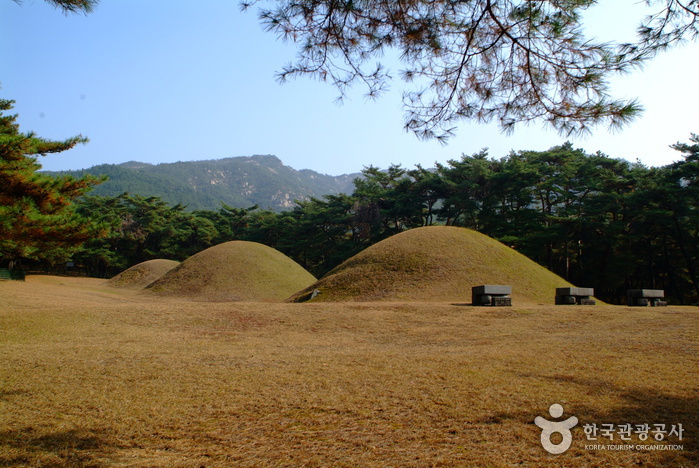
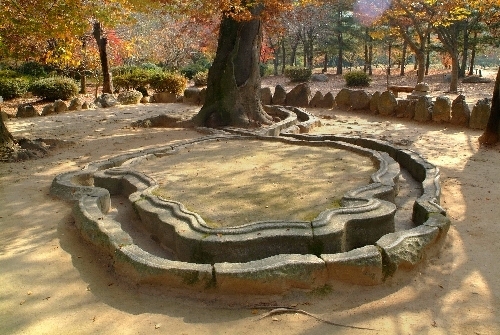
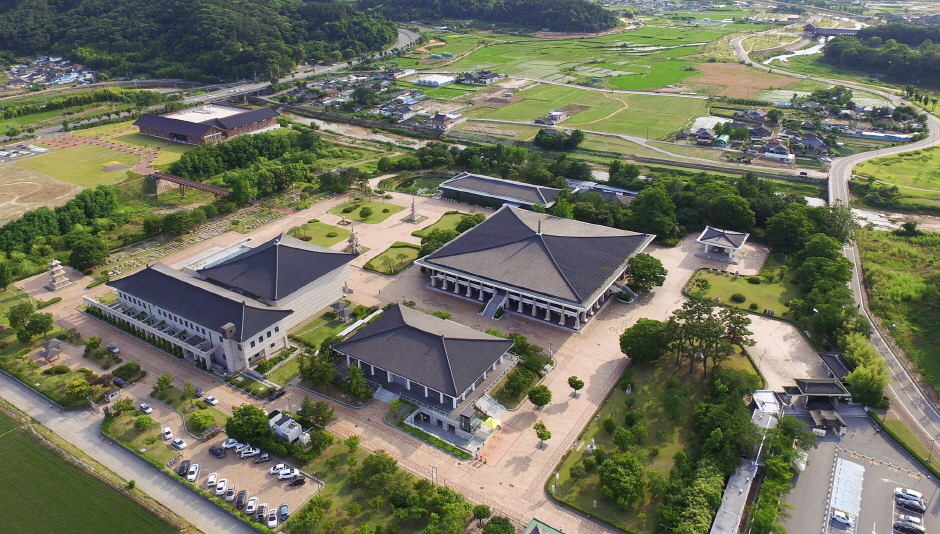
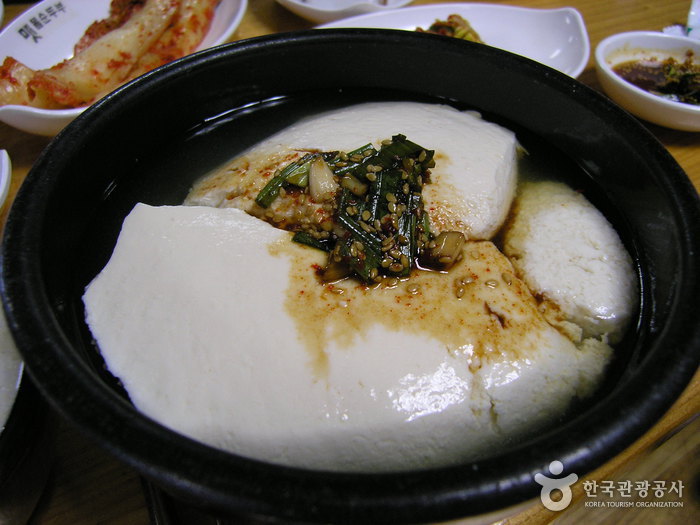
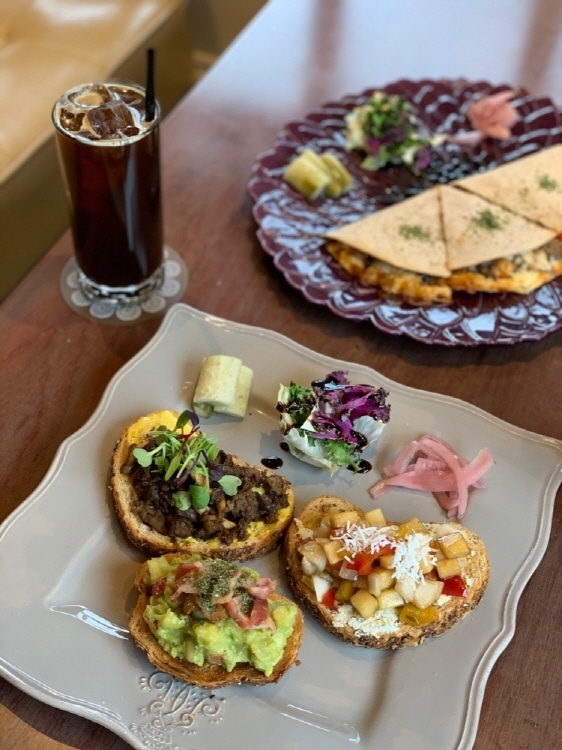
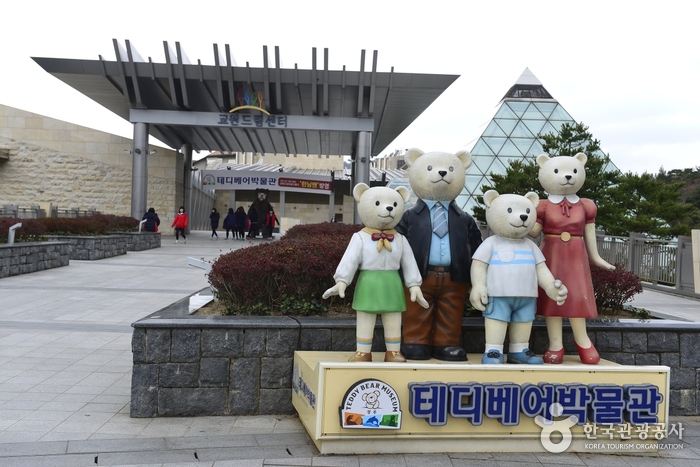
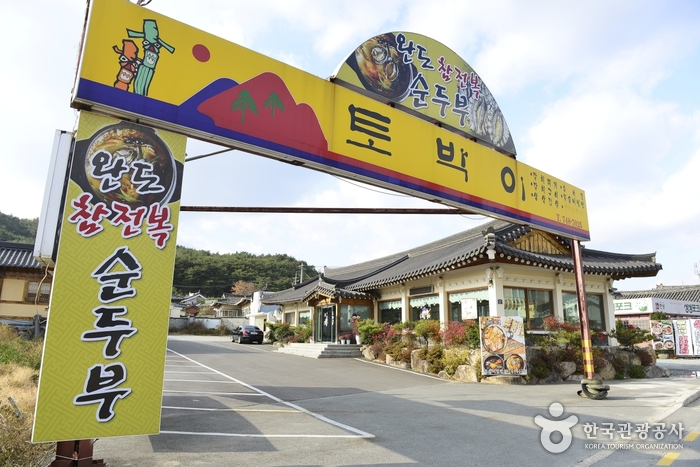
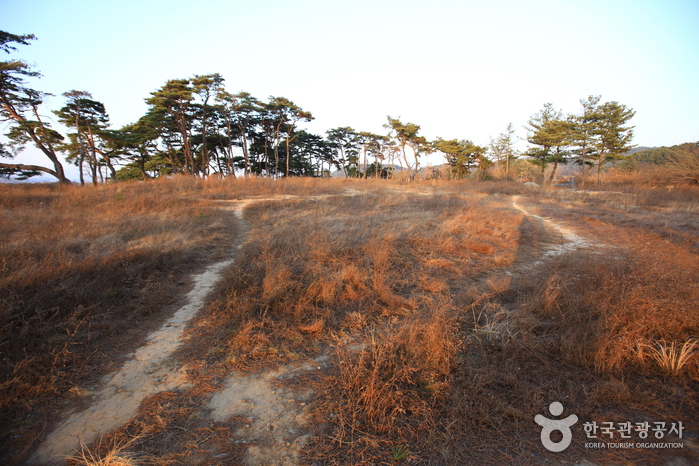
 English
English
 한국어
한국어 日本語
日本語 中文(简体)
中文(简体) Deutsch
Deutsch Français
Français Español
Español Русский
Русский